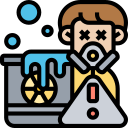Responsible Disposal Paths That Work
Many municipalities run permanent sites or seasonal collection days for paints, solvents, pesticides, and more. Check local calendars, confirm accepted items, and prepare materials to speed up your visit.
Responsible Disposal Paths That Work
Hardware stores often accept batteries and fluorescent bulbs, while pharmacies may handle sharps and certain medications. Call ahead to verify policies, packaging requirements, and limits to avoid surprises.






